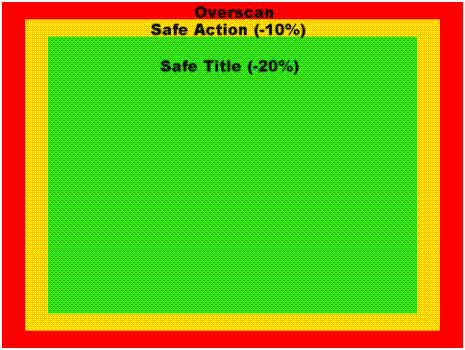overscan
Overscan is a screen display in which the peripheral area of a signal is no longer displayed on a television set or monitor. From the history of television sets, only a core area of a television image was displayed on the screen, because the television sets of the analog design had fluctuations in the size of the image, which were associated with the supply voltage, the temperature and the aging of the components.
This "cropping" of the image content is taken into account in the production of the content by two limitations: SMPTE RP27.3 and ITU-RBT.1379-1 respectively. This is the innermost area "Safe Title", which must always be visible and which is respected when fonts and symbols or logos are inserted. Furthermore, there is the area of "Safe Action", which should contain all content necessary for understanding the action of the content shown.
In more recent times, at least the range of "Safe Action" has been significantly expanded in the production of DVDs, for example, so that in a given case the entire image signal is required for full enjoyment of the presentation. The formerly existing limits of -10% for "Safe Action" and -20% for "Safe Title", are no longer respected by most of today's TV sets. For perfectionist home cinema users, a display with overscan is unacceptable.

